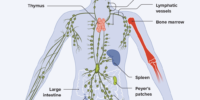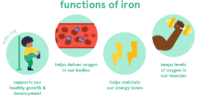Bone Health And Diseases. Modern Treatments

Bone health is an essential aspect of overall health, as our bones provide structural support and protect vital organs. Good bone health is necessary for mobility, posture, and overall physical activity. However, with age and other factors, bone health can deteriorate, leading to various bone diseases, such as osteoporosis, osteomalacia, and Paget’s disease.
Modern medicine has made significant advancements in treating bone diseases, allowing individuals to maintain healthy bones and prevent the onset of bone diseases.
This article will discuss the importance of bone health, factors affecting bone health, and common bone diseases. Additionally, we will explore modern treatments for bone diseases and preventative measures that individuals can take to maintain healthy bones throughout their lives.
Key Takeaways
- Adequate intake of calcium and vitamin D is crucial for maintaining good bone health and preventing bone diseases such as osteoporosis.
- Regular weight-bearing exercises can stimulate bone growth and increase bone density, reducing the risk of bone diseases.
- Medications such as bisphosphonates, hormone therapy, and calcium and vitamin D supplements can improve bone health and prevent further deterioration.
- Early diagnosis and intervention can help manage symptoms and improve outcomes for individuals with bone diseases.
The Importance of Bone Health
The preservation of bone health is imperative as it is crucial for physical mobility and overall quality of life, and the consequences of poor bone health can be severe and life-altering.
Bones provide support for the body, protect vital organs, and allow for movement. Additionally, bones are responsible for producing blood cells and storing essential minerals such as calcium and phosphorus. Therefore, maintaining strong and healthy bones is essential to overall health and wellbeing.
As individuals age, bone density tends to decrease, which can lead to conditions such as osteoporosis, a condition characterized by weak and brittle bones. Osteoporosis can result in fractures, chronic pain, and a decreased quality of life.
It is estimated that over 200 million individuals worldwide suffer from osteoporosis, making it a significant public health concern. Therefore, understanding the importance of bone health and implementing preventative measures, such as proper nutrition and exercise, is crucial for maintaining healthy bones and preventing debilitating conditions such as osteoporosis.
Factors Affecting Bone Health
Several factors have been identified as playing a significant role in maintaining optimal bone density and strength. One of the most critical factors is nutrition. Adequate intake of calcium, vitamin D, and other essential nutrients is essential for the formation and maintenance of healthy bones.
Calcium is the primary mineral component of bones, and vitamin D helps the body absorb calcium. Other nutrients that contribute to bone health include magnesium, phosphorus, vitamin K, and vitamin C. A diet lacking in these nutrients can lead to weak bones, putting individuals at risk for fractures and other bone diseases.
Physical activity is another crucial factor that affects bone health. Weight-bearing exercise, such as running, jumping, and resistance training, stimulates bone growth and increases bone density. Engaging in regular exercise can also help maintain muscle strength, which is important because muscles help support and protect bones.
Conversely, a sedentary lifestyle can lead to weak bones and increase the risk of bone diseases. Other factors that can negatively impact bone health include smoking, excessive alcohol consumption, certain medications, and hormonal imbalances. Understanding these factors and taking steps to maintain optimal bone health can help prevent bone diseases and ensure overall health and well-being.
Understanding Bone Diseases
Understanding the complexities of bone structure and function can reveal the intricate processes that lead to disruptions in the skeletal system. Bone diseases can be broadly categorized into two types: degenerative and metabolic.
Degenerative bone diseases, such as osteoarthritis and osteoporosis, occur due to wear and tear of bone tissue over time. These diseases are more common in older individuals and can lead to joint pain, reduced mobility, and increased risk of fractures.
Metabolic bone diseases, on the other hand, occur due to abnormalities in bone metabolism. Examples include osteomalacia, a condition where bones become soft and weak due to vitamin D deficiency, and Pagets disease, where bones become enlarged and weakened due to excessive bone breakdown and formation. These diseases can affect individuals of all age groups and can result in a range of symptoms, such as bone pain, deformities, and increased risk of fractures.
Treatment for bone diseases involves a combination of medications, lifestyle changes, and surgical interventions, depending on the severity of the condition. Early diagnosis and intervention can help manage symptoms and improve outcomes for individuals with bone diseases.
Medications for Bone Health
Pharmacological interventions play a crucial role in managing and preventing bone-related disorders. There are several medications available that can help improve bone health and prevent further deterioration. These medications work by either increasing bone formation or reducing bone resorption.
Here are some examples of medications used for bone health:
- Bisphosphonates: These drugs work by inhibiting bone resorption and are commonly used to treat osteoporosis.
- Hormone therapy: Estrogen and progesterone can help increase bone density in women, but they come with potential risks and side effects.
- Calcium and Vitamin D supplements: These supplements are essential for maintaining bone health and preventing osteoporosis.
- Denosumab: This medication works by inhibiting the cells responsible for bone resorption and is used to treat osteoporosis and bone metastases.
- Teriparatide: This medication stimulates bone formation and is used to treat severe osteoporosis.
Overall, pharmacological interventions have proven to be effective in managing and preventing bone-related disorders. However, it is important to consult with a healthcare professional to determine the best treatment plan for an individual’s specific condition.
Lifestyle Changes for Strong Bones
Maintaining a healthy lifestyle that includes regular exercise, a balanced diet, and adequate sun exposure can contribute to strong and resilient bones. Exercise, particularly weight-bearing activities such as walking, running, and weightlifting, helps stimulate bone growth and maintain bone density. Additionally, a diet rich in calcium, vitamin D, and other essential nutrients can support bone health. Foods such as dairy products, leafy greens, and fatty fish are good sources of these nutrients.
Sun exposure is also important for bone health, as it helps the body produce vitamin D. However, it is important to practice safe sun exposure and avoid excessive exposure that can increase the risk of skin cancer. Incorporating these lifestyle changes into one’s routine can help prevent bone loss and reduce the risk of osteoporosis and other bone-related diseases.
| Exercise | Calcium-rich Foods | Vitamin D-rich Foods |
|---|---|---|
| Walking | Dairy Products | Fatty Fish |
| Running | Leafy Greens | Egg Yolks |
| Weightlifting | Fortified Foods | Sunlight Exposure |
Table: Lifestyle changes for strong bones.
Exercise and its Impact on Bone Health
Regular exercise plays a vital role in promoting bone density and strength, making it an essential component of a healthy lifestyle. When we engage in physical activity, our bones experience a certain amount of stress, causing them to adapt and become stronger.
Weight-bearing exercises, such as walking, jogging, and weightlifting, are particularly effective in promoting bone health as they put pressure on the bones, stimulating the production of new bone tissue.
In addition to promoting bone density, exercise also helps improve balance and coordination, reducing the risk of falls and fractures. As we age, our bones become more fragile, and falls can have serious consequences.
By incorporating exercise into our daily routine, we can improve our bone health and reduce the risk of developing osteoporosis and other bone-related diseases. However, it is important to consult with a healthcare professional before starting any new exercise program, particularly if you have a history of bone-related issues.
The Role of Calcium and Vitamin D
Calcium and vitamin D are essential nutrients for maintaining strong and healthy bones. Calcium is the primary mineral component of bone tissue and plays a crucial role in bone formation and maintenance. The body needs a constant supply of calcium to build and maintain strong bones throughout life. Calcium is also necessary for muscle contractions, nerve function, and blood clotting.
Vitamin D helps the body absorb calcium and supports bone health. It is produced by the body when the skin is exposed to sunlight and can also be obtained through dietary sources such as fatty fish, egg yolks, and fortified foods. Vitamin D deficiency can lead to weakened bones and an increased risk of fractures. It is especially important for individuals at high risk for osteoporosis, such as postmenopausal women and older adults, to ensure they are getting enough calcium and vitamin D in their diet or through supplements.
Preventative Measures for Bone Diseases
Prevention of bone disorders can be achieved through a combination of physical activity, healthy diet, and adequate exposure to sunlight. These measures are particularly important for individuals who are at a higher risk of developing bone diseases, such as women after menopause and men over the age of 70.
- Engage in weight-bearing exercises: Weight-bearing exercises such as walking, jogging, and strength training can help to improve bone density and reduce the risk of fractures. These exercises stimulate the bones to produce new cells, resulting in stronger and healthier bones.
- Consume a balanced diet: A balanced diet that includes calcium-rich foods such as dairy products, leafy green vegetables, and fortified cereals, can help to support bone health. Additionally, consuming foods rich in vitamin D such as fatty fish, egg yolks, and fortified foods can help the body absorb calcium more effectively.
- Get adequate sunlight exposure: Vitamin D is produced in the body when the skin is exposed to sunlight. It is therefore important to spend time outdoors and get adequate sunlight exposure. However, it is important to take precautions to avoid skin damage and skin cancer, such as wearing sunscreen and protective clothing.
Conclusion
In conclusion, bone health is crucial for overall physical well-being. Numerous factors, such as age, gender, genetics, and lifestyle, can affect bone health, leading to various bone diseases. Fortunately, several modern treatments, including medications, lifestyle changes, and exercise, can improve bone health and prevent bone diseases.
Calcium and vitamin D play a significant role in maintaining strong bones. Therefore, it is essential to consume a diet rich in these nutrients and take supplements if necessary. Additionally, preventative measures, such as avoiding smoking and excessive alcohol consumption, can reduce the risk of bone diseases.
Overall, bone health is a vital aspect of overall health and well-being. By understanding the factors that affect bone health and implementing preventative measures and modern treatments, individuals can maintain strong and healthy bones throughout their lives.
It is essential to prioritize bone health and take necessary steps to prevent bone diseases, as they can significantly impact a person’s quality of life and mobility. Therefore, it is crucial to make informed decisions and seek professional advice to ensure optimal bone health.









